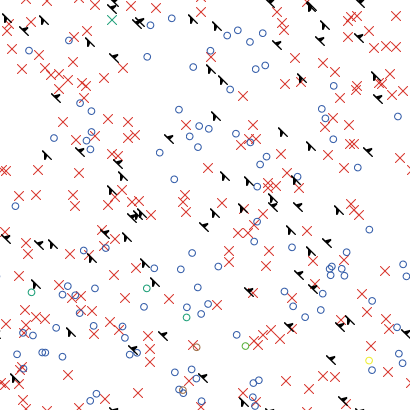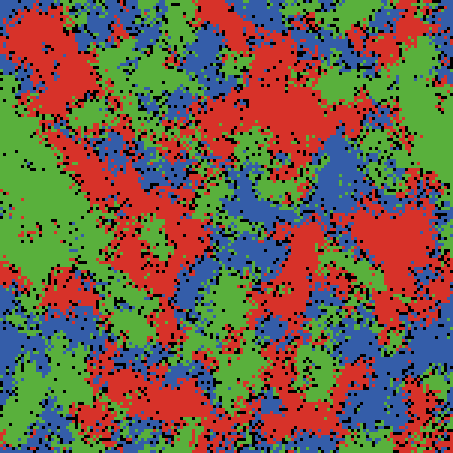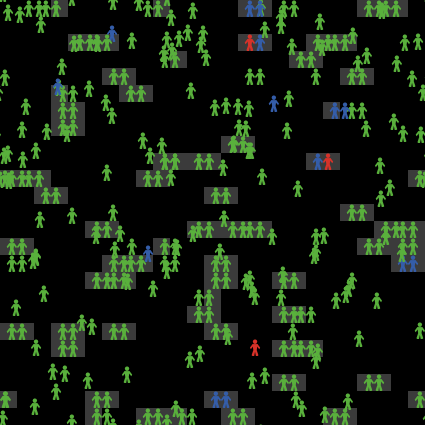to-report
A reporter is a predefined procedure that returns a value and, unlike a command, cannot be a stand-alone code element. NetLogo has some useful built-in reporters that cannot be changed directly such as ticks, pi, e, world-width, and world-height. For example, we cannot just write ticks in the code. We need to use ticks in some other algorithm such as:
if ticks > 9 [
wake-up
]
Other primitives that we use for filtering agentsets or manipulating lists such as of, with, sort-on, and word are reporters, too.
Many turtle, patch, and link properties such as color or label can be thought of as both variables that we can change with the set command, as well as reporters that provide us with the values of these variables. Notice in the following example that the brackets [ ] come before of:
if xcor < 0 [
if [pycor] of patch-here > 0 [
set label “Quadrant II”
]
]
Finally, you can create custom reporters using the to-report keyword to begin a reporter procedure and the report command at the end of your procedure, right before the end keyword. Reporters can be useful to tidy up your code and keep you from repeating lines of code; if you use the same equation or long line of code multiple times, a to-report procedure can be used to replace it.
For example, instead of writing ask turtles with [ shape = “person” and color = green and size > 5 ] many times, we could define a reporter procedure as follows:
to-report big-green-people
report turtles with [ shape = “person” and color = green and size > 5 ]
end
Once we define this variable, we can replace each turtles with [ shape = “person” and color = green and size > 5 ] statement in our code with big-green-people, such as ask big-green-people [ do-things ].
to-report is often used for complex calculations. For example, if we wanted to calculate the area of circles many times in our code, we could define the following reporter:
to-report circle-area [ r ]
report ( pi * ( r ^ 2 ) )
end
Now, whenever we would like to calculate the area of a circle, we could simply write circle-area radius.
In the model example below, we have many circles large and small. These circles represent particles within a gas container. Each particle has the same energy. However, each of them has a different speed because a particle's kinetic energy is equal to its mass times the square of its speed divided by two ($E = \frac{1}{2} m v^2$). Instead of writing this complicated code to calculate a particle's speed within the go procedure, we define a speed reporter. Although we kept the code of this model example deliberately simple, defining this reporter would make a big difference if we had a more complex model where we needed to calculate the speed of a particle in many different parts of our code.
Try it Yourself
What's next?
Once you mastered the to-report primitive, don't stop there. Check out the resources below to improve your NetLogo skills.



